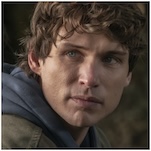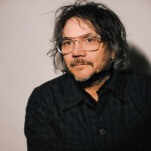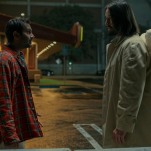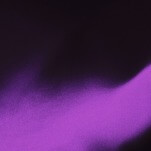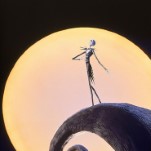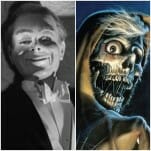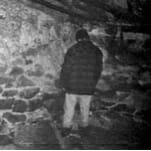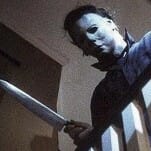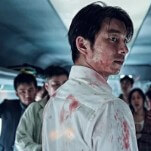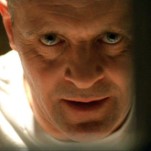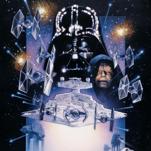Legendary Creator Dave Gibbons Looks Back on The Originals
The Watchmen Artist Reflects on His Eisner-Award-Winning Graphic Novel, Out This Week in an Essential Edition From Berger Books
Art by Dave Gibbons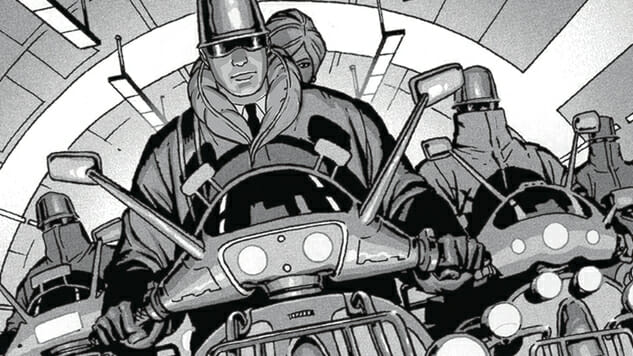
Dave Gibbons truly is an original, establishing himself in his native British comic scene before partnering with writers like Alan Moore and Frank Miller to create some of the medium’s most enduring works. While Watchmen looms large in his bibliography, Gibbons has also written for other artists, and struck out on his own for one long-form work: The Originals, first released by DC Comics’ Vertigo imprint in 2004, and out this week in a newly expanded edition from Dark Horse’s Berger Books imprint. Karen Berger first pushed Gibbons to conceive, write, illustrate and design the tale of warring youth gangs and the allure of cool, so it’s only fitting that her eponymous imprint should help bring the Eisner Award-winning graphic novel back into print for a new audience, complete with a host of process sketches, layouts and test pages. In advance of The Originals: The Essential Edition hitting shelves this Wednesday, Paste chatted with Gibbons about his work process, the art of collaboration and the growth of the comics medium throughout his decades in the industry.
![]()

The Originals: The Essential Edition Cover Art by Dave Gibbons
Paste Magazine: The Originals first came out 14 years ago, and I imagine you’re asked quite frequently about a certain book that debuted over 30 years ago. What’s it like for you, as an artist and storyteller, to look back on your past work so frequently? Is it easy to return to the headspace you were in when you first created the books, or does that feel like a different Dave altogether now?
Dave Gibbons: I don’t mind being asked about past projects! I think it’s amazing that there’s still an interest in my previous work. It’s just incredible to me that over 30 years later people are still finding new stuff and still want to ask new questions about Watchmen. The same goes for other projects I’ve done like Martha Washington and The Originals (currently). I’m just thrilled that these things have lasted for so long, and certainly for much longer than I thought they ever would!
No, I don’t think you can return to the headspace you were in when you created the books. And in some ways, that’s a good thing because most artists will tell you that they actually can’t stand their printed work, particularly when they first see it. They’ll see the mistakes or the things they could’ve done better. There’s something about a lot of time going by, like decades going by, that means you can look at it in a much more detached view. When you create a piece of art, you have the unique disadvantage that you alone out of anybody in the world can see in your mind’s eye what the creation could have been. Therefore, what the work actually is, results in an element of disappointment. On the other hand, everybody else in the world sees what the story is and not what it could’ve been. After a few years have gone by, you find yourself in the happier position of just being able to see what it is and think the work is okay.
Paste Magazine: You mentioned in your introduction that Karen Berger encouraged you to write and draw your own long-form comic for years before The Originals came about. I’ve seen you say elsewhere that you ultimately prefer collaboration. Do you see yourself returning to solo work in the near future, especially with Karen curating a new imprint? Or is it more fulfilling for you to work in a team of creators?
Gibbons: I’m kind of torn on that. I sort of have this idea that the “real” comics artist is someone that does the whole thing (writes the story, draws, colors and letters it, too). But on the other hand, that’s quite a lonely furrow. By the time you’ve written the story, you’re familiar with it and have read through it multiple times. By the time you’ve drawn it, you’re familiar with it and read it all once again. By the time you’ve colored and lettered it, you’re incredibly familiar with the story and have now read it many times. It becomes a bit like that joke that you feel you told once too often.
I’m really happy that I did The Originals by myself because out of all the projects I’ve done, it’s the most personal. It’s the most autobiographical, and I don’t think I’d really have liked to share it with anybody else or liked to see anyone else’s vision of it.
Generally, I do prefer for collaboration because you do bounce ideas back and forth. It’s nice to know that there’s at least one other person in the world who actually gives a rat’s ass about your story! Some of my happiest and most creative times have been spent in collaboration; whether I’m drawing somebody else’s script or I’m writing a script for someone else.
The Originals stands alone, but I do have a little niggling germ of an idea, which would be kind of a sequel. The story is so personal that it would be something that I’d do entirely by myself. I’m not really in the mood for doing it or in the place that I could do it right now, but who knows, at some point, I may very well do it. If I do go forward with creating a sequel, Berger Books would most definitely be my preferred home for it!

The Originals: The Essential Edition Interior Art by Dave Gibbons
Paste Magazine: The Originals draws heavily from the Mods but sci-fi touches like hover-scooters allow it to speak more broadly about youth movements and the teenage drive to belong and to prove yourself. Do you feel like anything on par with the Mods or the Grease could exist today, or is culture too fragmented and fast-moving for movements and trends like that?
Gibbons: The reason it’s called The Originals is because, not to be funny, but my generation was probably the first generation to set its own agenda. We all had jobs and enough money to indulge our taste in clothes, going out, music and scooters. We really were “the originals,” and there was nobody else like that really. People used to dress and behave like mini-versions of their parents, and then all of a sudden as Mods we were doing something that was quite similar to that but was actually fundamentally different. The Grease were kind of rebels as well, but they were too obvious. It was sort of a ham-fisted attempt at rebellion. I like the more secretive and disguised mode that Mods operated in. Your parents knew you looked smart, but they didn’t realize that you looked a particular way and it was like you were dressed in a camouflage. I don’t think there could be anything that was so polarizing as Mods and Grease.
I didn’t add the science fiction details to give The Originals a universal appeal. The first time I saw Mods and Mods scooters was almost like seeing people from another planet because they were so outside of my everyday experience. John Higgins, a colorist/collaborator on Watchmen, also pointed out to me that a big guy on a scooter looks kind of silly, and I thought that I’d need to add something to the story to make it look more impressive. I wanted the reader to be as impressed with the Mods scooters as I was when I first saw a Mod. I liked the idea of having some unexplained technology, which meant that the Mods scooters and Grease bikes float above the ground. Both groups having the technology implies that it’s relatively cheap and ubiquitous. I deliberately didn’t explain it, and I think for a long while in the book you don’t really notice it. Again, The Originals is based somewhere like post-war Britain, but it isn’t actually post-war Britain. It’s an alternate universe in the same way that the Watchmen universe is.
-

-

-

-

-

-

-

-

-

-

-

-

-

-

-

-

-

-

-

-

-

-

-

-

-

-

-

-

-

-

-

-

-

-

-

-

-

-

-

-










